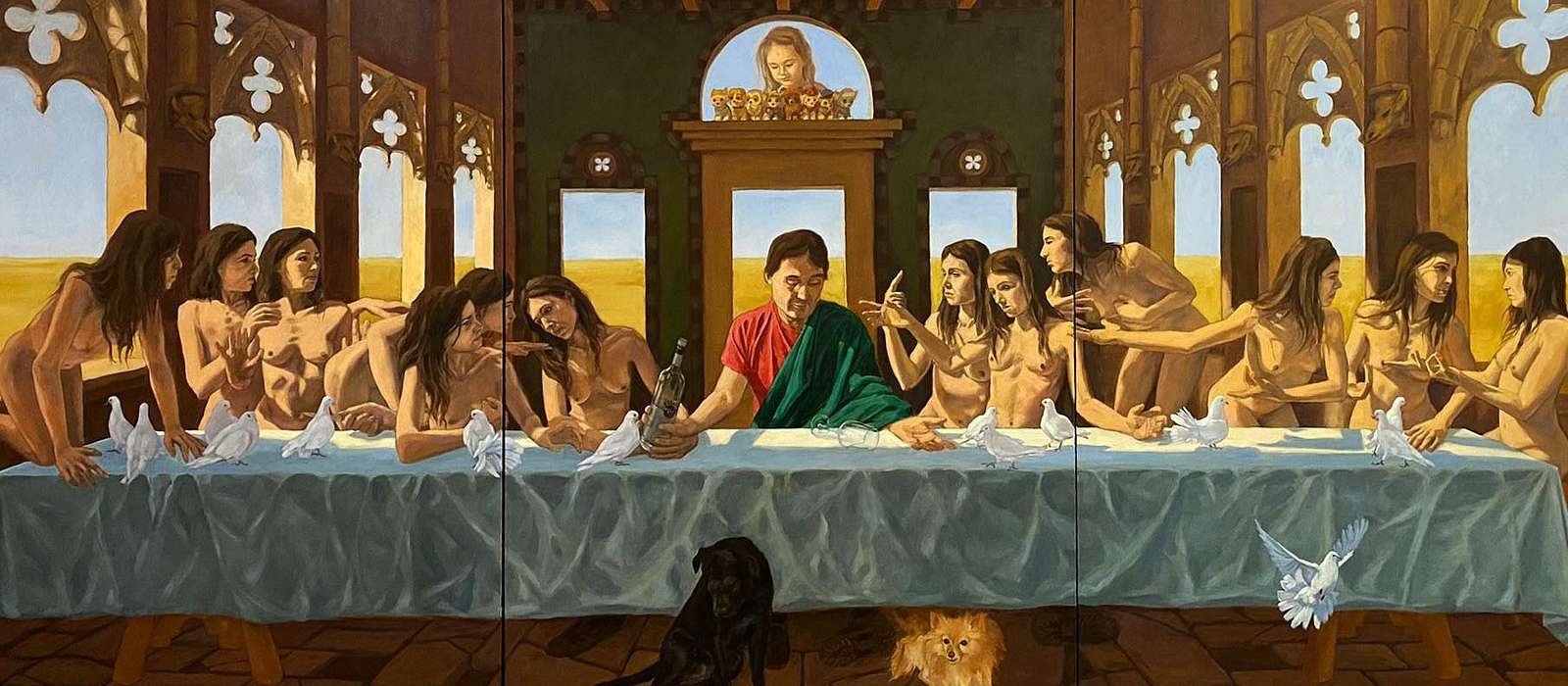Original artwork delivered to your doorstep! 🎨


Nikolai Kupriakov
Nikolai Kupriakov
Founder of the École des Beaux-arts de Montréal-Artus and a committed artist, Nikolai Kupriakov has been working in Quebec since 1991. Over the years, his extensive studies in art and architecture, as well as his skill, have helped build his reputation.
Born in Russia in 1963, he was determined to become a painter from an early age. Since then, his life and career have never strayed from the realm of fine art, which he believes remains the sole pillar of the complex amalgam that the various visual arts practices have become.
After completing his studies at the School of Fine Arts in Chuguev (Ukraine) in 1979, Nikolai Kupriakov obtained a Bachelor's degree in Architecture from the Irkutsk Polytechnic Institute in the USSR in 1985, followed in 1990 by a Bachelor's degree in Art Education from the National Academy of Fine Arts in Vilnius, Lithuania. Once established in Quebec, he obtained a Master's degree in Conservation of the Built Environment from the Université de Montréal in 2001.
Between 1985 and 1990, he also worked as an architect in Vilnius, winning two national competitions, which enabled him, despite his young age, to become a member of the Lithuanian Order of Architects.
His artistic work at the time was marked by the idealism of a student with a head slightly swollen by relative success in school and university circles. Problems with the Soviet authorities led him to develop an intolerant attitude towards the authoritarian system.
In 1991, hoping to find a society based on values that respected democracy and individual freedom, Nikolai Kupriakov moved to Canada. His early years were marked by a bitter struggle with the Canadian immigration system to establish himself in Quebec. For eight long years, he was deprived of his two children stuck in Lithuania. This became a recurring theme in his work of the period.
Nevertheless, the artist led an active professional life in the visual arts. He is involved in associations, first on the Board of Directors of the Conseil de la peinture du Québec (1996-1997), and then on the Board of Directors of the Regroupement des artistes en arts visuels du Québec (RAAV) from 1998 to 2003. He paints and participates in numerous exhibitions in Québec and abroad. His particularly profound works often prompt the public to reflect on many aspects of social life. Some of his exhibitions have already provoked public debate on the role of art in society.
Ironically, it is in Quebec that he is the most censored. Several of his protest works, which criticize either the abuse of power or taboos, have been withdrawn from various exhibitions. In 2005, after criticizing discrimination and abuse in the Politique d'intégration des arts à l'architecture du Québec, a policy aimed at professional artists, he was expelled from the policy file by the Ministry of Culture. However, he formed a group of artists who campaigned for years to improve this government policy and democratize its application.
Alongside his easel painting practice, he systematically developed performance art as a way of popularizing painting. His interventions are spectacular and do not go unnoticed.
He produces numerous performances as a guest artist on television programs, including ''La fin du monde est à 7 h 00'', ''Le Gala Artis de 2009'' and many others. In June 2009, at the Festival du Grand Rire in Quebec City, he performed with the Orchestre symphonique de Québec at the Grand Théâtre de Québec.
In 1999, he founded the École des Beaux-arts de Montréal Artus (EBAMA), which over the years has become the flagship school for classical visual arts education in Montreal. His school quickly became the most sought-after among painting and drawing schools. The competence of its teachers and the rigor of the programs developed by Nikolai Kupriakov have propelled EBAMA to the forefront of professional painting training.
Nikolai Kupriakov has always remained true to his philosophy of the arts, based on democracy and freedom in the visual arts. He also vigorously defends his principles of respect and pluralism of aesthetic currents. This, however, cost him dearly.
In 2013, in the context of a relentless fight against discrimination against professional artists in Quebec, he produced a protest work featuring a portrait of a Quebec Superior Court judge in excrement. He was immediately cracked down on by the Quebec police. Thus, his fight against discrimination is transformed into a fight for Freedom of Expression. Nikolai Kupriakov was forced into exile in France for almost two years.
On his return to Quebec, he took over as director of the École des Beaux-arts de Montréal. His works are now even sharper and more eloquent, reflecting an artist's uncompromising stance in defense of our society's fundamental rights.
**Automatically translated from the original text.**
Need help?
Do not hesitate to contact our online support to answer all your questions. It will be a pleasure to assist you.

We seek to empower the art community by fostering meaningful connections between artists and art lovers.

